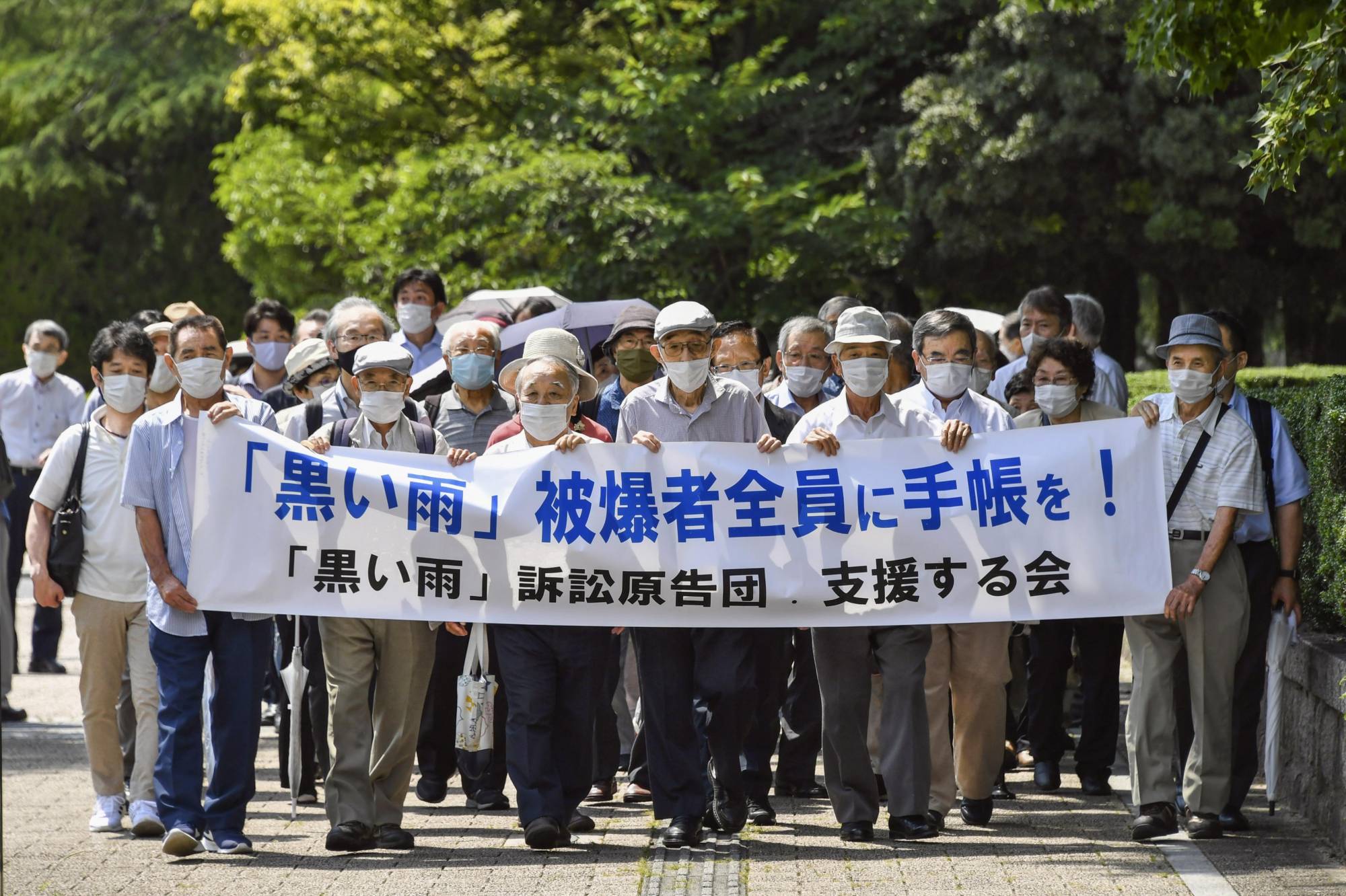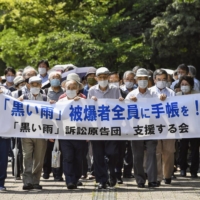Hiroshima – The Hiroshima High Court ruled Wednesday that 84 people in Hiroshima are eligible to receive state health care benefits even though they were exposed to radioactive “black rain” following the 1945 U.S. atomic bombing outside an area currently recognized by the government.
Upholding a lower court decision last year, the court ruled in favor of the plaintiffs, saying they should receive the same benefits as those provided to atomic bomb survivors who were in the zone where the state recognized that black rain fell.
The high court ruling is expected to impact the ongoing review by the central government on areas where black rain fell and its health impact.
In line with a Hiroshima District Court ruling in July last year, the high court recognized all 84 plaintiffs, including deceased individuals succeeded by family members, as hibakusha, or survivors of the atomic bombing and ordered the prefectural and city governments of Hiroshima to accept their applications for state health care benefits.
The high court said radioactive rain fell in a wider area beyond the designated zone and the plaintiffs are hibakusha because it is impossible to rule out the possibility they suffered health damage caused by exposure to radiation.
Residents in the black rain zone are eligible to receive free health checkups and atomic bomb survivors certificates entitled to medical benefits in case of developing 11 specific illnesses caused by radiation effects.
But the plaintiffs’ applications for health care benefits for atomic bomb survivors filed with the Hiroshima prefectural and city governments between 2015 and 2018 were rejected as they resided outside the zone, prompting them to sue the governments to seek nullification of their decisions.
Based on previous research, the central government designated an oval-shaped area measuring 19 kilometers in length and 11 km in width stretching northwest of the hypocenter of the atomic bombing on Aug. 6, 1945, as the zone where black rain fell for an hour or longer.
The local governments, as well as the Health, Labor and Welfare Ministry, appealed the district court ruling last August, insisting “highly scientific proof” was necessary to determine whether the plaintiffs were in an environment affected by radiation, which is one of the conditions for being recognized as an atomic bomb survivor.

The defendants argued there is no scientific proof that nuclear fallout was prevalent in the plaintiffs’ residential area and even if they were exposed to radiation, its effects on their health should be insignificant.
The plaintiffs argued they only needed to prove the possibility of health damage caused by radiation, in line with the district court ruling. “In addition to the external radiation exposure due to the rain, there was a possibility of internal exposure by consuming contaminated food and well water,” they said.
Last November, the health ministry launched a review panel comprised of experts to study areas where black rain fell and its health impact after the local governments asked for an expansion of the recognized black rain zone based on the district court’s ruling.
The panel, which has met five times so far, decided to conduct climate simulations and soil investigation, in addition to analyzing journals by atomic bomb survivors, but it has not reached a conclusion yet.
In a time of both misinformation and too much information, quality journalism is more crucial than ever.
By subscribing, you can help us get the story right.
SUBSCRIBE NOW




